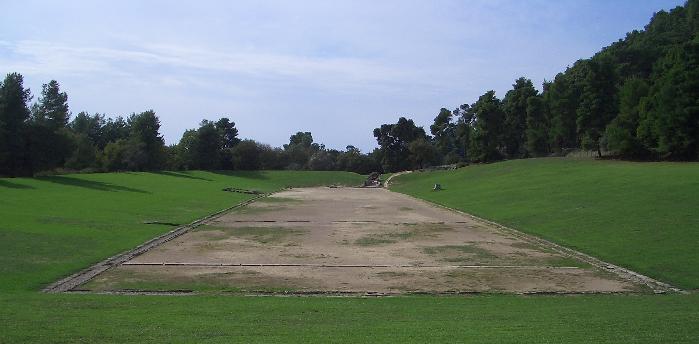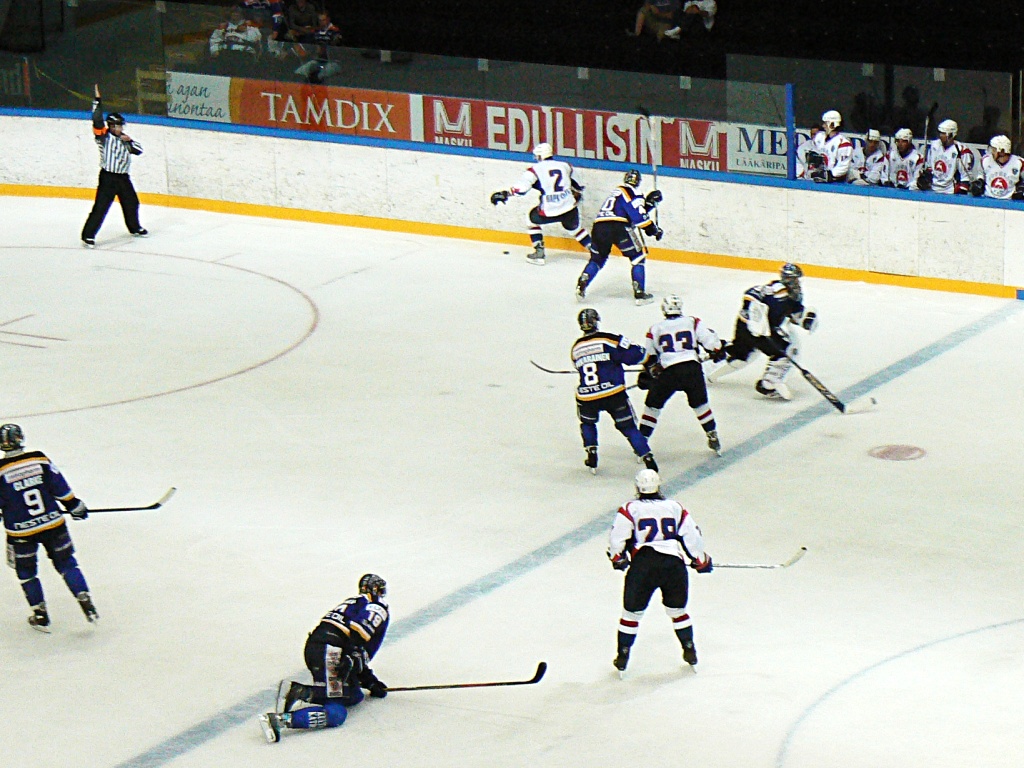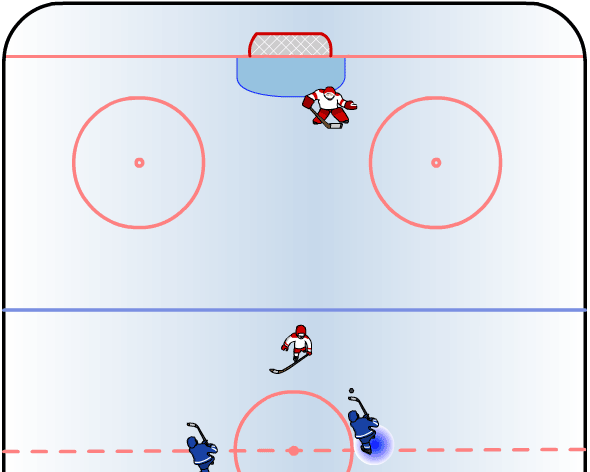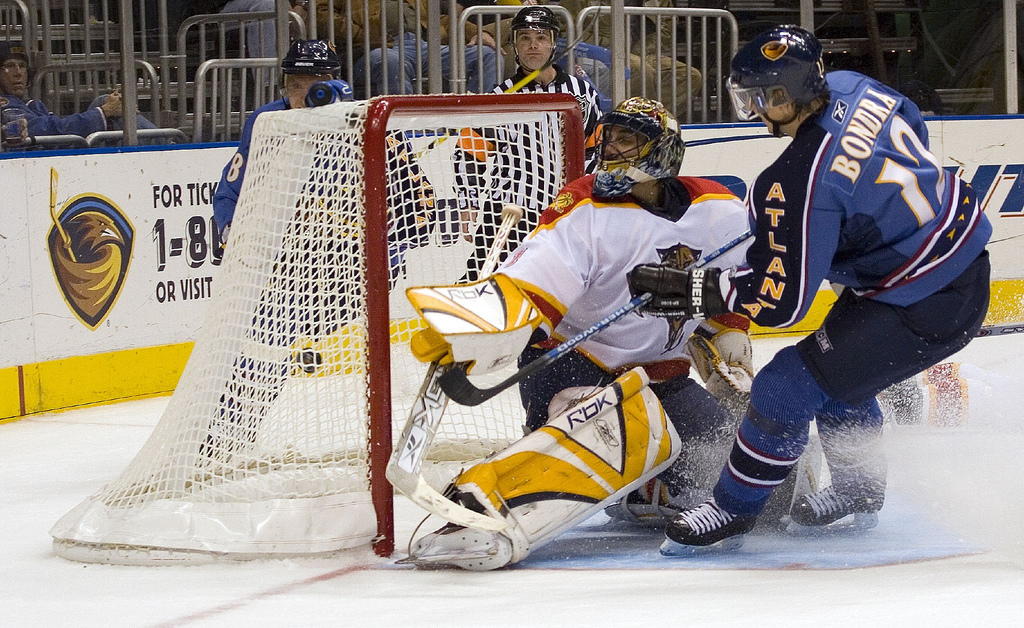|
Erik Hämäläinen
Erik Vesa Hämäläinen (born April 20, 1965 in Rauma, Finland) is a left-handed retired Finnish ice hockey defenceman. Hämäläinen currently is an Ice hockey coach, employed by SM-liiga team Lukko Playing career Early career Erik Hämäläinen started his professional career with his hometown team, Rauman Lukko, which played in the Finnish SM-liiga. He debuted during the 1982–1983 Season. Lukko was demoted from SM-liiga after the 82–83 season, but gained promotion by winning the I-Divisioona in 1984. Hämäläinen played for six seasons (1982–1988) in Lukko. His last was cut short when an injury sidelined him for most of the season. In 1989, Hämäläinen moved to Kuopio and started to play for KalPa. He stayed with KalPa for four Seasons (1989–1992) before transferring to Helsingin Jokerit in 1992. During his three-year stint with Jokerit, he won a gold and silver medal to accompany his two silver medals from KalPa and Lukko. He also won the European bronze medal ... [...More Info...] [...Related Items...] OR: [Wikipedia] [Google] [Baidu] |
SM-liiga
The Liiga, colloquially called the Finnish Elite League in English or FM-ligan in Swedish, is the top professional ice hockey league in Finland. The league comprises 16 teams from all around Finland with relegation and promotion between the Mestis. The winner of the Liiga playoffs is awarded the Kanada-malja at the end of each season. Teams from the Liiga participate in the IIHF's annual Champions Hockey League (CHL), competing for the European Trophy. Participation is based on the strength of the various leagues in Europe (excluding the European/Asian Kontinental Hockey League). The Liiga was established in 1975 to replace the former SM-sarja, which was fundamentally an amateur competition. The Liiga is not directly overseen by the Finnish Ice Hockey Association, but the league and association have an agreement of cooperation. SM is a common abbreviation for ''Suomen mestaruus'', "Finnish Champion". History The SM-liiga was established in 1975 to replace the amateur comp ... [...More Info...] [...Related Items...] OR: [Wikipedia] [Google] [Baidu] |
Olympic Games
The modern Olympic Games (Olympics; ) are the world's preeminent international Olympic sports, sporting events. They feature summer and winter sports competitions in which thousands of athletes from around the world participate in a Multi-sport event, variety of competitions. The Olympic Games, Open (sport), open to both amateur and professional athletes, involves more than 200 teams, each team representing a sovereign state or territory. By default, the Games generally substitute for any world championships during the year in which they take place (however, each class usually maintains its own records). The Olympics are staged every four years. Since 1994 Winter Olympics, 1994, they have alternated between the Summer Olympic Games, Summer and Winter Olympics every two years during the four-year Olympiad. Their creation was inspired by the ancient Olympic Games, held in Olympia, Greece, from the 8th century BC to the 4th century AD. Baron Pierre de Coubertin founded the Int ... [...More Info...] [...Related Items...] OR: [Wikipedia] [Google] [Baidu] |
1984–85 SM-liiga Season
The 1984–85 SM-liiga season was the tenth season of the SM-liiga, the top level of ice hockey in Finland. 10 teams participated in the league, and Ilves Tampere won the championship. Standings Playoffs Semifinal * TPS - Ässät 3:2 (2:7, 2:4, 6:1, 3:2, 5:2) * Ilves - Kärpät 3:1 (2:4, 3:2, 5:2, 5:3) 3rd place * Kärpät - Ässät 2:1 (7:2, 3:4, 4:1) Final * TPS - Ilves 2:3 (3:2, 6:1, 1:8, 2:3, 2:3) Relegation External links SM-liiga official website {{DEFAULTSORT:1984-85 SM-liiga season 1984–85 in Finnish ice hockey Fin A fin is a thin component or appendage attached to a larger body or structure. Fins typically function as foils that produce lift or thrust, or provide the ability to steer or stabilize motion while traveling in water, air, or other fluids. F ... Liiga seasons ... [...More Info...] [...Related Items...] OR: [Wikipedia] [Google] [Baidu] |
I-Divisioona ...
I-Divisioona was the second tier of ice hockey in Finland from 1974 to 2000. It replaced the previous league Suomensarja that ran from 1936 to 1974. I-Divisioona was known as the Finland-liiga (1992–1994) and the Fazer liiga (1994–1996) due to naming rights deals. In 2000, I-Divisioona was replaced by Mestis. Participating teams External linksFinnish Ice Hockey Federation {{DEFAULTSORT:1-Divisioona Ice hockey leagues in Finland Defunct ice hockey competitions in Finland Fin A fin is a thin component or appendage attached to a larger body or structure. Fins typically function as foils that produce lift or thrust, or provide the ability to steer or stabilize motion while traveling in water, air, or other fluids. F ... [...More Info...] [...Related Items...] OR: [Wikipedia] [Google] [Baidu] |
1983–84 I-Divisioona Season ...
The 1983–84 I-Divisioona season was the tenth season of the I-Divisioona, the second level of Finnish ice hockey. 10 teams participated in the league, and Lukko Rauma won the championship. Lukko Rauma and JYP Jyväskylä qualified for the promotion/relegation round of the SM-liiga. Regular season External links Seasonon hockeyarchives.info {{DEFAULTSORT:1983-84 I-Divisioona season I-Divisioona seasons 2 Fin A fin is a thin component or appendage attached to a larger body or structure. Fins typically function as foils that produce lift or thrust, or provide the ability to steer or stabilize motion while traveling in water, air, or other fluids. F ... [...More Info...] [...Related Items...] OR: [Wikipedia] [Google] [Baidu] |
1982–83 SM-liiga Season
The 1982–83 SM-liiga season was the eighth season of the SM-liiga, the top level of ice hockey in Finland. 10 teams participated in the league, and HIFK Helsinki won the championship. Standings Replay for 8th place * Kärpät - Kiekko-Reipas 2:7 Playoffs Quarterfinals * Ilves - SaiPa 2:0 (4:1, 3:2) * TPS - Tappara 1:2 (2:7, 9:5, 2:3) Semifinal * Jokerit - Tappara 3:0 (4:3, 3:1, 5:4) * HIFK - Ilves 3:1 (8:1, 1:7, 6:2, 3:2 P) 3rd place * Ilves - Tappara 2:0 (5:3, 8:5) Final * Jokerit - HIFK 2:3 (4:3 P, 7:4, 2:6, 2:5, 2:3) Relegation * HPK Hämeenlinna - Lukko Rauma 3:0 (4:1, 6:1, 3:0) * Kärpät Oulu - JoKP Joensuu 3:2 (14:3, 6:7, 10:1, 1:4, 4:1) External links SM-liiga official website {{DEFAULTSORT:1982-83 SM-liiga season 1982–83 in Finnish ice hockey Fin A fin is a thin component or appendage attached to a larger body or structure. Fins typically function as foils that produce lift or thrust, or provide the ability to steer or stabilize motion while trave ... [...More Info...] [...Related Items...] OR: [Wikipedia] [Google] [Baidu] |
Penalty (ice Hockey)
A penalty in ice hockey is a punishment for an infringement of the rules. Most penalties are enforced by sending the offending player to a penalty box for a set number of minutes. During the penalty the player may not participate in play. Penalties are called and enforced by the Official (ice hockey)#Referees, referee, or in some cases, the Official (ice hockey)#Linesmen, linesman. The offending team may not replace the player on the ice (although there are some exceptions, such as fighting), leaving them short handed, short-handed as opposed to full strength. When the opposing team is said to be on a ''Power play (ice hockey), power play'', they will have one more player on the ice than the short-handed team. The short-handed team is said to be "on the penalty kill" until the penalty expires and the penalized player returns to play. While standards vary somewhat between leagues, most leagues recognize several common varieties of penalties, as well as common infractions. The statist ... [...More Info...] [...Related Items...] OR: [Wikipedia] [Google] [Baidu] |
Point (ice Hockey)
In ice hockey, a player is credited with one point for either a goal or an assist. The total number of goals plus assists equals total points. In the National Hockey League The National Hockey League (NHL; , ''LNH'') is a professional ice hockey league in North America composed of 32 teams25 in the United States and 7 in Canada. The NHL is one of the major professional sports leagues in the United States and Cana ... (NHL), the Art Ross Trophy is awarded to the player who leads the league in points at the end of the regular season. References NHL Rulebook, Rule #78– Goals and Assists {{Ice hockey navbox Ice hockey statistics Ice hockey terminology ... [...More Info...] [...Related Items...] OR: [Wikipedia] [Google] [Baidu] |
Assist (ice Hockey)
In ice hockey, an assist is attributed to up to two players of the scoring team who shot, passed or deflected the Puck (sports)#In ice hockey, puck towards the scoring teammate, or touched it in any other way which enabled the Goal (ice hockey), goal, meaning that they were "assisting" in the goal. There can be a maximum of two assists per goal. The assists will be awarded in the order of play, with the last player to pass the puck to the goal scorer getting the primary assist and the player who passed it to the primary assister getting the secondary assist. Players who gain an assist will get one point (ice hockey), point added to their player statistics. When a player scores a goal or is awarded a primary or secondary assist, they will be given a point. The leader of total points throughout an NHL season will be awarded the Art Ross trophy. Despite the use of the terms "primary assist" and "secondary assist", neither is worth more than the other, and neither is worth more or less ... [...More Info...] [...Related Items...] OR: [Wikipedia] [Google] [Baidu] |
Goal (ice Hockey)
In ice hockey, a goal is scored when the puck entirely crosses the goal line between the two goal posts and below the goal crossbar. A goal awards one point to the team attacking the goal scored upon, regardless of which team the player who actually deflected the puck into the goal belongs to (see also own goal). Typically, a player on the team attempting to score shoots the puck with their stick towards the goal net opening, and a player on the opposing team called a goaltender tries to block the shot to prevent a goal from being scored against their team. The term goal may also refer to the structure in which goals are scored. The ice hockey goal is rectangular in shape; the front frame of the goal is made of steel tube painted red and consists of two vertical goalposts and a horizontal crossbar. A net is attached to the back of the frame to catch pucks that enter the goal and also to prevent pucks from entering it from behind. The entire goal is considered an inbounds area ... [...More Info...] [...Related Items...] OR: [Wikipedia] [Google] [Baidu] |
Season (sports)
In an organized sports league, a typical season is the portion of one year in which regulated games of the sport are in session: for example, in Major League Baseball the season lasts approximately from the last week of March to the last week of September. In other team sports, like association football or basketball, it is generally from August or September to May although in some countries – such as Northern Europe, North America or East Asia – the season for oudoor summer sports starts in the spring and finishes in autumn, mainly due to weather conditions encountered during the winter. A year can often be broken up into several distinct sections (sometimes themselves called seasons). These are: a preseason, usually a series of exhibition games played for training purposes; a regular season, the main period of the league's competition; the postseason, a playoff tournament played against the league's top teams to determine the league's champion; and the offseason, the time w ... [...More Info...] [...Related Items...] OR: [Wikipedia] [Google] [Baidu] |
Playoffs
The playoffs, play-offs, postseason or finals of a sports league are a competition played after the regular season by the top competitors to determine the league champion or a similar accolade. Depending on the league, the playoffs may be either a single game, a series of games, or a tournament, and may use a Single-elimination tournament, single-elimination system or one of several other playoff format, different playoff formats. Playoff, in regard to international fixtures, is to qualify or progress to the next round of a competition or tournament. In team sports in the U.S. and Canada, the vast distances and consequent burdens on cross-country travel have led to regional divisions of teams. Generally, during the regular season, teams play more games in their division than outside it, but the league's best teams might not play against each other in the regular season. Therefore, in the postseason a playoff series is organized. Any group-winning team is eligible to participate, ... [...More Info...] [...Related Items...] OR: [Wikipedia] [Google] [Baidu] |




